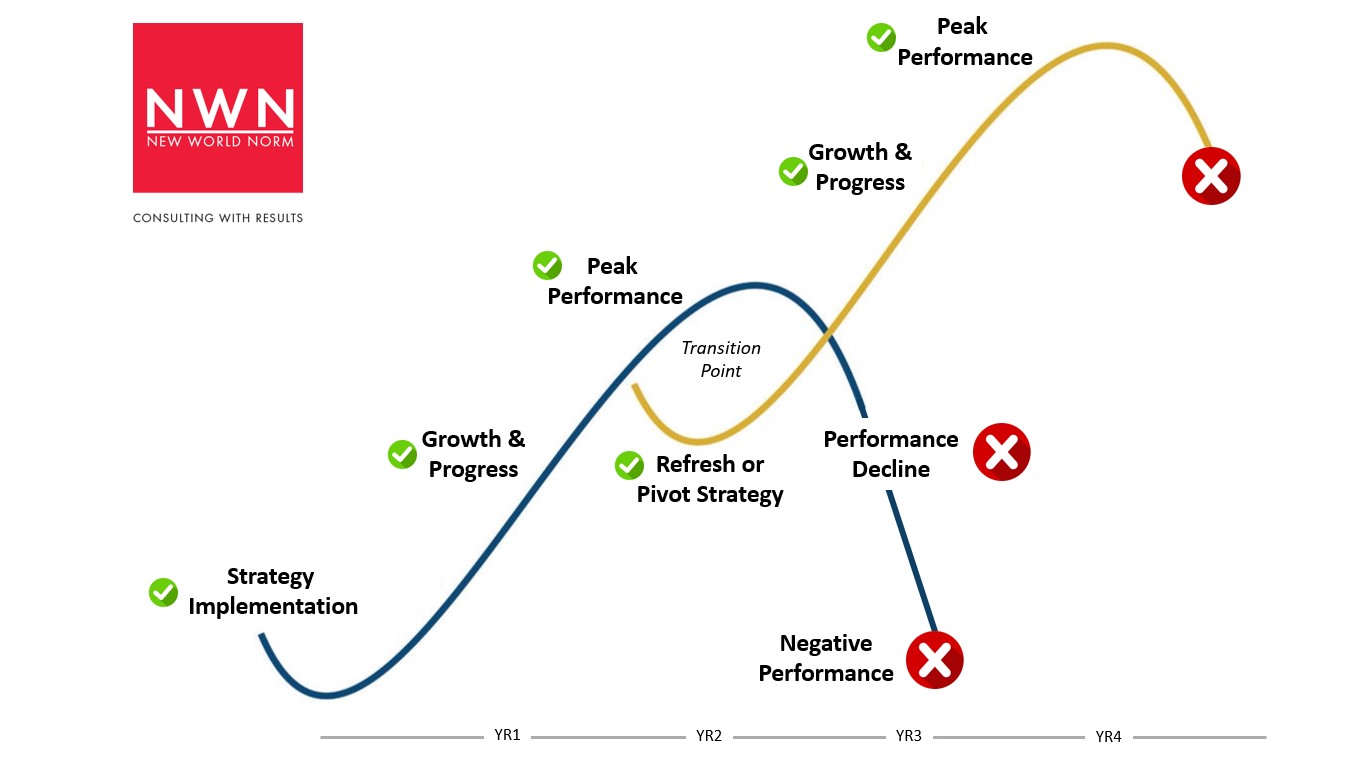Welcome to our guide on highly effective leadership in risk management. We will explore the concept of utilising the sigmoid curve to maximise performance and achieve outstanding results in managing risks.
The Sigmoid Curve:
A Powerful Tool for Leadership The sigmoid curve, often used in business and management, illustrates the natural life cycle of organisations, projects, functions and initiatives. By understanding and leveraging the sigmoid curve, leaders can strategically navigate risks and optimise performance.
Here’s how it works:

Assessment: Conduct a thorough assessment of potential risks and opportunities before embarking on any endeavor. Identifying key risk factors will enable you to develop proactive strategies to mitigate them.
Planning: Develop a comprehensive risk management plan that encompasses various scenarios, contingencies, and mitigation strategies. This plan should be flexible enough to adapt to changing circumstances.
Execution: Implement the risk management plan while closely monitoring key performance indicators. Effective leadership involves proactive decision-making and swift action when necessary.
Review and Adaptation: Regularly evaluate the effectiveness of your risk management strategies. Adapt and adjust your approach based on the feedback received and emerging trends to maintain optimal performance.
The Importance of Transitioning at the Right Time to Prevent Downward Performance:
One critical aspect of effective leadership in risk management is recognising the need for transitioning at the right time. The sigmoid curve demonstrates that after an initial growth phase, performance may start to decline if appropriate actions are not taken.
Leaders must be vigilant in identifying signs of diminishing returns or plateauing performance. Transitioning at the right time allows for a smooth shift from the current state to a new phase of growth, preventing a downward spiral.
Here are key considerations for successful transitions:
Continuous Monitoring: Regularly assess and monitor performance metrics to identify any signs of stagnation or decline. This monitoring can include analysing market trends, customer feedback, employee engagement, and financial indicators.
Recognizing Warning Signs: Pay attention to warning signs such as declining sales, reduced productivity, increasing costs, or a decrease in customer satisfaction. These indicators can signal the need for change and prompt a proactive transition.
Strategic Planning: Develop a well-thought-out transition plan that outlines the steps to be taken to maintain momentum and drive growth. Consider factors such as market dynamics, competitive landscape, technological advancements, and evolving customer needs.
Communication and Alignment: Ensure effective communication with stakeholders at all levels of the organisation. Engage key team members, employees, and partners to align their efforts and gain their support during the transition. Transparent communication helps manage expectations and reduces resistance to change.
Flexibility and Agility: Embrace flexibility and adaptability during the transition process. As circumstances evolve, be prepared to adjust the transition plan accordingly. Being agile allows for quick decision-making and course correction as needed.
By transitioning at the right time, leaders can sustain performance and drive continued growth, maximizing the potential of their risk management efforts.


Apple Inc. is a prime example of a company that has effectively utilised the sigmoid curve to innovate and sustain growth throughout its history. Let’s explore how Apple leveraged the sigmoid curve to maximise performance and achieve remarkable success:
Assessment: In the early stages of Apple, co-founders Steve Jobs and Steve Wozniak assessed the potential risks and opportunities in the emerging personal computer industry. They recognised the need for user-friendly and visually appealing products, identifying a gap in the market that they could exploit.
Planning: Apple developed a comprehensive risk management plan that emphasised intuitive user interfaces, seamless integration of hardware and software, and a focus on design aesthetics. This strategic plan set Apple apart from its competitors and laid the foundation for its future success.
Execution: Apple executed its plan by launching groundbreaking products such as the Macintosh, iPod, iPhone, and iPad. These products revolutionised their respective industries and propelled Apple to new heights. The company’s commitment to exceptional user experiences and constant innovation ensured its continued success.
Review and Adaptation: Apple regularly reviewed the effectiveness of its strategies, adapting to changing market dynamics and consumer demands. For instance, when faced with declining sales in the early 2000s, Apple recognised the need for a transition and reinvented itself with the introduction of the iPod and later the iPhone, capitalising on the growing demand for portable music players and smartphones.
By recognising the need for transitioning at the right time, Apple was able to prevent a downward performance and instead achieve exponential growth. This ability to adapt and reinvent themselves has been a defining characteristic of Apple’s success.
Throughout its journey, Apple has demonstrated a remarkable understanding of the sigmoid curve, knowing when to enter new markets, release innovative products, and pivot when necessary. By strategically timing their transitions, Apple has consistently maintained its position as a leader in the technology industry.
Apple’s utilisation of the sigmoid curve has not only driven its own success but has also had a significant impact on the broader industry. The company’s innovative products and design-centric approach have influenced competitors and set new benchmarks for user experience, pushing the industry forward.
In conclusion, Apple’s effective leadership in risk management, leveraging the sigmoid curve, has played a pivotal role in its ongoing growth and innovation. By assessing, planning, executing, and adapting strategically, Apple has become a global leader, setting a powerful example for businesses aiming to achieve long-term success.